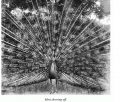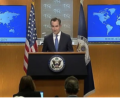Chinese Capital’s Population Declines for First Time Since 2003

The population of Beijing, China’s capital, has fallen for the first time in two decades, official data show, in line with the general trend of the country’s declining numbers, which has stoked concerns about the nation’s economic outlook.
According to statistics the government released Tuesday, Beijing’s population had fallen by 43,000 people to 21.84 million by the end of 2022.
Most notably, the death rate in the capital surpassed the birth rate. The death rate in Beijing, one of the country’s most populous urban centers, rose to 5.72 deaths per 1,000 people, while the birth rate fell to 5.67 births per 1,000 people, according to a report released by the People’s Government of Beijing Municipality.
“The natural [population] growth was -0.05 [per 1,000 people],” said a release on its website. It was the first time the population had dropped since 2003.
The birth rates in Beijing and other Chinese cities are tabulated based on the number of permanent residents, excluding migrant populations.
Li Shaomin, professor of international business at Old Dominion University in Virginia, said the decline and aging of the Chinese population “will pose a great challenge for China.” He noted, however, the patterns of fertility and mortality are gradual and predictable, and the government should have enough time to make policy changes to mitigate the impact of decline and aging.
“So the real challenge is how the Chinese Communist Party prioritizes and allocates resources dealing with it,” he said.
Beijing’s population decline was in line with national trends. In January, the National Bureau of Statistics announced China had entered an “era of negative population growth,” after figures showed a historic drop in the number of people for the first time in six decades, since the Great Chinese Famine from 1958 to 1961. The population fell by 850,000 to 1.412 billion people by the end of 2022.
Demographers have said this marks the start of what is projected to be a long period of population decline. They also noted the decline had begun almost a decade earlier than the United Nations anticipated. As recently as 2019, the U.N. projected China’s population would peak from 2031 to 2032.
China’s population growth rate has been trending downward largely because of its 35-year “one-child” policy. Since the 1990s, China’s fertility rate – the average number of children born to a woman over her lifetime – has dropped to below the replacement level of 2.1. The replacement rate is the rate that allows the population to replace itself.
The figure was 1.30 in 2020, and it fell to 1.15 in 2021.
Chinese demographers had for more than a decade campaigned to scrap the one-child policy, before the government ended it in 2015. Concerned about an aging population and shrinking work force, the government finally allowed couples to have two children in 2015 and further eased the limit to three in 2021.
Studies found the rising costs of bringing up children and lack of welfare provisions to be the main reasons behind China’s low fertility rate. In recent years, the government has been desperate to boost birth rates – offering incentives such as tax breaks, subsidies for child care and longer parental leave, and discouraging abortions – but without much success. Some experts say the best officials can do is to slow the population’s decline.
Most urban Chinese young people, affected by three years of stringent COVID-19 measures, have shown more of an unwillingness to have children. An online survey last year of more than 20,000 people, mostly urban women between 18 and 25, found that two-thirds have a “low birth desire.”
Chen Daoyin, a former associate professor at Shanghai University of Political Science and Law, said China’s negative population growth “isn’t necessarily a bad thing.”
While China’s industrial output won’t be immediately affected as labor supply still exceeds demand, “it won’t have the strength to challenge the world order,” he said.
— By Verna Yu in VOA, Mar 22, 2023
-
Book Shelf
-
 Book Review
DESTINY OF A DYSFUNCTIONAL NUCLEAR STATE
Book Review
DESTINY OF A DYSFUNCTIONAL NUCLEAR STATE
- Book ReviewChina FO Presser Where is the fountainhead of jihad?
- Book ReviewNews Pak Syndrome bedevils Indo-Bangla ties
- Book Review Understanding Vedic Equality….: Book Review
- Book Review Buddhism Made Easy: Book Review
- Book ReviewNews Elegant Summary Of Krishnamurti’s teachings
- Book Review Review: Perspectives: The Timeless Way of Wisdom
- Book ReviewNews Rituals too a world of Rhythm
- Book Review Marx After Marxism
- Book Review John Updike’s Terrorist – a review
-
-
Recent Top Post
-
 CommentariesTop Story
India’s Migration Dilemma
CommentariesTop Story
India’s Migration Dilemma
-
 Commentaries
Crowd Management Blues
Commentaries
Crowd Management Blues
-
 Meher Baba SpeaksNews
Meher Baba Loved Them Too…
Meher Baba SpeaksNews
Meher Baba Loved Them Too…
- Commentaries Record Pentagon spending bill and America’s hidden nuclear rearmament
-
 CommentariesNews
Ides of trade between India and Pakistan
CommentariesNews
Ides of trade between India and Pakistan
-
 Commentaries
How sustainable is the rhetoric of India-China Bhai-Bhai
Commentaries
How sustainable is the rhetoric of India-China Bhai-Bhai
-
 CommentariesTop Story
New Set of Diplomatic Strains with Canada
CommentariesTop Story
New Set of Diplomatic Strains with Canada
-
 News
Ratan Tata’s Legacy
News
Ratan Tata’s Legacy
-
 Commentaries
India’s Strategic Push on the World Stage
Commentaries
India’s Strategic Push on the World Stage
- Commentaries Veils of Resistance
-
AdSense code
















